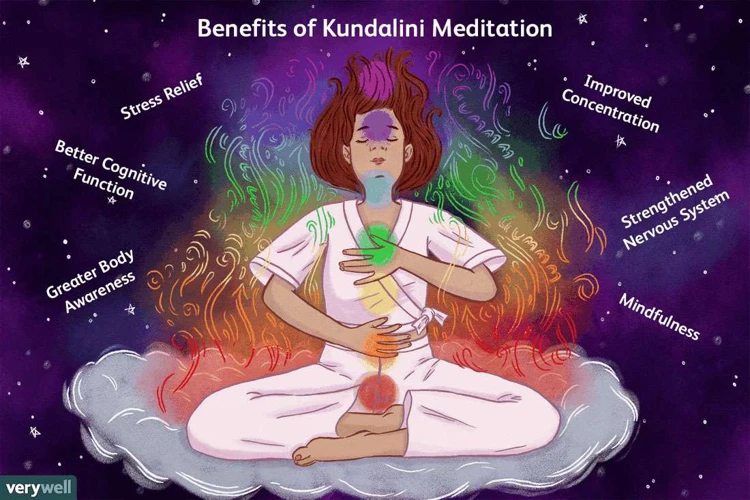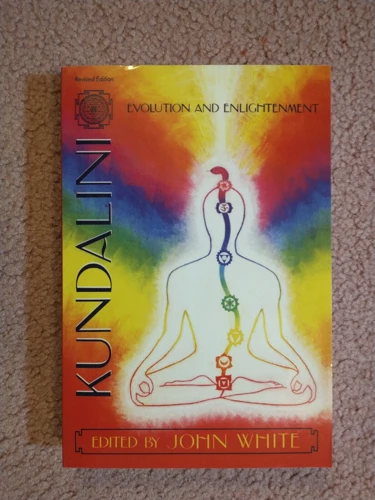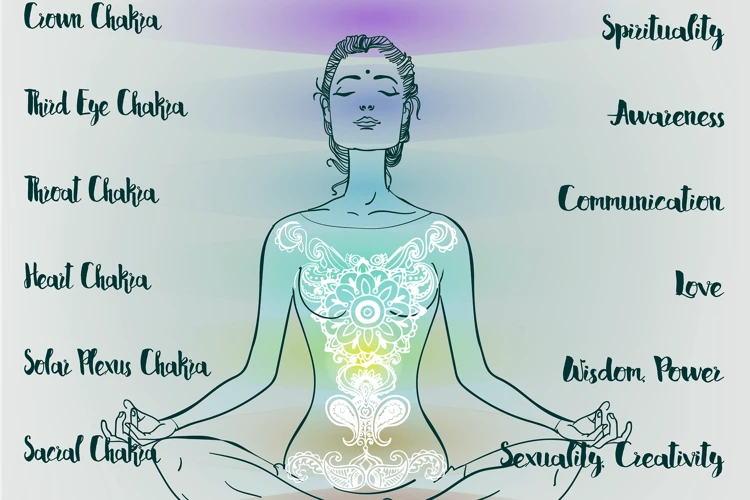Throughout history, meditation has been used as a means of achieving inner peace, spiritual growth, and physical health. Among the various kinds of meditation, Kundalini Meditation has emerged as a powerful practice. But where does Kundalini Meditation come from? How did it change over time? What are its benefits? And, how can you practice it? This article seeks to answer these questions with an in-depth look at the history and origins of Kundalini Meditation, its evolution, benefits and techniques for practicing. Join me as we unravel the mysteries of this fascinating practice that has been traced back to ancient times.
The Ancient Roots of Kundalini Meditation

Kundalini meditation is an ancient practice that has been passed down for centuries. Its origins can be traced back to the early teachings of Hinduism and Buddhism. However, the exact roots of Kundalini meditation remain shrouded in mystery and debate. Despite this uncertainty, one thing is clear – the profound effects of this practice on the mind, body, and spirit have been felt by individuals for centuries. In this section, we will delve into the first mentions of Kundalini meditation in ancient texts, explore its relationship with Tantra, and examine the role that yoga and Sikhism played in its development.
First Mentions in Ancient Texts
Throughout history, Kundalini meditation has been mentioned in a number of ancient texts, from Hindu to Buddhist scriptures. According to these texts, Kundalini is the energy that lies dormant at the base of the spine of every human being, waiting to be awakened.
One of the first mentions of Kundalini can be found in the Upanishads, which were written between 800 and 400 BCE. The term “Kundalini” is derived from the Sanskrit word “Kundala,” which means “coiled up.” The Upanishads speak of Kundalini as a serpent that lies coiled up at the base of the spine, waiting to be awakened by a skilled practitioner.
In Tantric texts, Kundalini is often referred to as the “Divine Mother” or “Shakti,” meaning power or energy. In this context, Kundalini is seen as a powerful force that can help individuals achieve higher states of consciousness and awareness.
In Yoga scriptures, Kundalini is seen as a form of Dharma, or life purpose. The Bhagavad Gita, one of the most famous Hindu texts, speaks of Kundalini as a way to achieve enlightenment and ultimate liberation, or Moksha.
Although these texts mention Kundalini in different contexts, they all share the belief that Kundalini energy is a powerful force that lies within every human being. By unlocking this energy, individuals can achieve higher levels of consciousness and ultimately find liberation. The practice of Kundalini meditation has been passed down through centuries, and continues to be an important spiritual practice to this day.
Kundalini and Tantra
The connection between Kundalini and Tantra is a complex and fascinating subject. Tantra is a spiritual practice that originated in India and dates back to ancient times. It is a diverse system that encompasses a wide range of practices, including meditation, yoga, and ritualistic worship. The goal of Tantra is to achieve spiritual liberation through the integration of the physical, mental and spiritual aspects of one’s being.
Kundalini is an energy that is said to reside at the base of the spine. According to Tantric philosophy, this energy can be awakened through various practices, such as meditation, yoga and pranayama. When awakened, Kundalini energy rises up through the spine, penetrating and activating the chakras along the way. This process is said to lead to higher states of consciousness and spiritual enlightenment.
The traditional Tantric approach to Kundalini involves a comprehensive system of practices, including meditation, asana, pranayama and the use of mantras and yantras. These practices are designed to purify the body and mind, stimulate the flow of prana (life force energy) and activate the Kundalini energy. Kundalini is often depicted as a coiled serpent at the base of the spine, and the awakening of this energy is often symbolized by the uncoiling of the serpent.
The practice of Kundalini as a part of Tantra is also associated with the awakening of the Shakti, or divine feminine energy, which is said to reside at the base of the spine. The awakening of this energy is said to allow the practitioner to merge with the divine and achieve a state of ultimate bliss.
The connection between Kundalini and Tantra is deeply rooted in the spiritual traditions of India. Through the practices of Kundalini Yoga and Tantric philosophy, practitioners can access higher states of consciousness and enlightenment.
The Role of Yoga and Sikhism
When it comes to the origins of Kundalini Meditation, yoga and Sikhism play a significant role. Both practices are deeply ingrained in Indian culture and have influenced the development of Kundalini Meditation over the centuries.
Yoga, which means “union” in Sanskrit, is a physical, mental, and spiritual practice that originated in ancient India. The practice includes physical postures, breathing exercises, and meditation, all designed to promote physical and mental balance.
Sikhism, on the other hand, is a monotheistic religion that originated in the Punjab region of India during the 15th century. The religion emphasizes the importance of meditation, spiritual discipline, and the pursuit of knowledge as a means of attaining unity with God.
The teachings of yoga and Sikhism have been instrumental in the development of Kundalini Meditation. In yoga, Kundalini refers to a powerful energy that lies coiled at the base of the spine. Through specific breathing exercises and physical postures, practitioners aim to awaken this energy and allow it to flow through the body.
Similarly, in Sikhism, Kundalini is described as a spiritual energy that can be awakened through meditation and devotion to God. The practice of Kundalini Meditation in Sikhism is called Shabad Guru, and it is believed to help individuals achieve a state of higher consciousness and spiritual awakening.
Combining the teachings of yoga and Sikhism, Kundalini Meditation has evolved over the centuries into a powerful spiritual practice that can help individuals achieve physical, mental, and spiritual balance. Through the practice of Kundalini Meditation, individuals can awaken their innermost potential, unlock their creativity, and achieve a sense of inner peace and harmony.
The Evolution of Kundalini Meditation

As Kundalini Meditation gained popularity in India, it started attracting the attention of spiritual seekers across the world. With the advent of globalization, Kundalini Meditation underwent a gradual evolution as it came into contact with various cultures and traditions. This evolution saw the rise of different forms of Kundalini Yoga, each with its own unique practices and techniques. Let’s delve deeper into the evolution of Kundalini Meditation and how it spread to the West.
Kundalini Yoga and the West
Kundalini Yoga is a form of yoga that is becoming increasingly popular in the West. Its origins lie in ancient India, but it wasn’t until the 20th century that it was introduced to those in the West.
Some of the key figures responsible for bringing Kundalini Yoga to the West include Yogi Bhajan and Swami Sivananda. In the late 1960s, Yogi Bhajan moved from India to North America and began teaching Kundalini Yoga to anyone who was interested. His teachings quickly gained popularity, and he soon had many followers in America and around the world.
Swami Sivananda, on the other hand, was a Hindu spiritual teacher who founded the Divine Life Society in 1936. He spread the teachings of yoga, including Kundalini Yoga, throughout India and the world. His teachings were influential in bringing Kundalini Yoga to the West, and his followers continue to practice and teach Kundalini Yoga today.
Kundalini Yoga was also popularized through the practice of White Tantric Yoga. This form of yoga involves meditative practices that help to raise the Kundalini energy and unlock spiritual potential. It was developed by Yogi Bhajan in the 1970s and practiced in communities all over the world.
Today, there are many teachers and organizations that offer Kundalini Yoga classes and workshops in the West, and the practice continues to gain popularity. Its unique focus on raising the Kundalini energy and its emphasis on meditation and mindfulness make it a popular choice for those looking to improve their physical, mental, and spiritual well-being.
The Development of White Tantric Yoga
White Tantric Yoga is a form of Kundalini Yoga that focuses on deepening the meditative experience by using specific techniques and practicing in groups. Its origins can be traced back to the teachings of Yogi Bhajan, who brought Kundalini Yoga to the West in the late 1960s.
The Path of White Tantric Yoga
White Tantric Yoga is a type of advanced meditation that is practiced in groups. Unlike other forms of yoga, it is not about achieving a specific physical posture, but rather, it involves a series of kriyas, or exercises, that are specific to White Tantric Yoga. The participants sit in a straight line facing the teacher, and the kriyas are performed for a specific period of time, sometimes up to an hour.
The Benefits of White Tantric Yoga
The benefits of White Tantric Yoga are numerous. Practitioners often report feeling more grounded, less anxious, and more at peace with themselves and the world around them. This is because the practice helps to balance the chakras, which are the energy centers of the body. By aligning and balancing the chakras, White Tantric Yoga can help to promote overall health and well-being.
The Growth of White Tantric Yoga
Since its inception in the 1970s, White Tantric Yoga has grown in popularity around the world. Today, there are numerous White Tantric Yoga workshops held annually in cities around the world. These workshops often attract large numbers of people seeking to deepen their meditation practice and experience the benefits of this unique form of yoga.
The Future of White Tantric Yoga
As more people discover the benefits of White Tantric Yoga, it is likely that this practice will continue to gain popularity. With the growth of the internet, it is easier than ever for people to find White Tantric Yoga workshops and resources, no matter where they are in the world. As more people take up this practice and begin to experience its benefits, it is likely that White Tantric Yoga will continue to evolve and develop, bringing new insights and understanding to the ancient practice of Kundalini Yoga.
Benefits of Kundalini Meditation

The effects of Kundalini Meditation have been felt and experienced by many individuals across the world. Its benefits are remarkable and can make a significant impact on your physical, emotional, and spiritual well-being. Through practicing Kundalini Meditation, you may experience a sense of calmness, inner peace, and heightened awareness. This section of the article will delve into the various benefits that Kundalini Meditation can bring into your life, including its physical, mental, emotional, and spiritual advantages. So, if you want to discover how this ancient spiritual practice can transform your life, keep reading!
Physical Benefits
Kundalini Meditation has been noted to provide numerous physical benefits to its practitioners. Here are some of the most notable benefits:
- Increased Circulation: Kundalini Meditation helps improve blood flow throughout the body, effectively aiding in the circulation of oxygen to different organs and muscles.
- Reduced Stress Levels: Many people carry stress and tension in their physical bodies. The relaxed state brought on by Kundalini meditation can help relieve this tension, thus lowering stress levels and the risk of stress-related illnesses.
- Better Sleep: Practicing Kundalini Meditation has been known to help with sleep-related issues such as insomnia. The practice helps calm the mind, in turn promoting a more peaceful and restful sleep.
- Improved Digestion: The controlled breathing techniques utilized in Kundalini Meditation can help stimulate the digestive system, leading to better digestion and assimilation of nutrients.
- Strengthened Immune System: One of the most significant physical benefits of Kundalini Meditation is the strengthening of the immune system. The practice promotes physical well-being and overall health, leading to a more robust immune system better equipped to handle and defend against various illnesses.
- Increased Flexibility: Many Kundalini Meditation techniques involve stretches and movements that help increase flexibility, balance, and coordination.
- Reduced Chronic Pain: After regular practice of Kundalini Meditation, practitioners have noted pain relief from various sources of chronic pain, such as migraines or lower back pain.
The physical benefits of Kundalini Meditation are numerous and can even extend to other areas of life outside of the meditation practice itself. By committing to regular practice, practitioners have the chance to reap the numerous benefits that come from promoting overall physical well-being.
Mental and Emotional Benefits
Kundalini meditation is not only beneficial for the physical body, but it can also have a positive impact on the mind and emotions. Here are some mental and emotional benefits of practicing Kundalini meditation:
- Reduced stress and anxiety: Kundalini meditation techniques can help to calm the mind and reduce feelings of stress and anxiety. It promotes deep breathing and relaxation which can help to lower cortisol levels in the body.
- Better focus and concentration: Kundalini meditation can help to increase focus and concentration. It uses various mantras and visualizations to help the mind stay focused and centered.
- Improved mood: Kundalini meditation can also help to improve our mood. It can release endorphins which can help to reduce feelings of sadness or depression. Some people also report feeling more joyful and content after practicing Kundalini meditation.
- Increased self-awareness: Practicing Kundalini meditation can help to increase self-awareness. It can help us to become more aware of our thoughts, emotions, and behaviors. This awareness can help us to make positive changes in our lives.
- Increased creativity: Kundalini meditation can also stimulate creativity. It can open up our minds to new possibilities and ideas.
- Improved relationships: Kundalini meditation can also improve our relationships. By increasing our self-awareness and improving our mood, we can become better partners, friends, and family members.
These mental and emotional benefits are just some of the many reasons why people practice Kundalini meditation. It can be a powerful tool for improving both our physical and mental well-being.
Spiritual Benefits
Practicing Kundalini meditation can also have numerous spiritual benefits, as it allows individuals to connect with their inner selves and the universe. Here are some of the spiritual benefits that Kundalini meditation can offer:
1. Heightened spiritual awareness: One of the primary benefits of Kundalini meditation is that it can bring about heightened spiritual awareness. Kundalini energy is believed to be the life force energy that resides within every individual. By awakening this energy, individuals can become more aware of their spiritual nature and connect with the universe on a deeper level.
2. Enhanced intuition: Kundalini meditation can also help individuals develop their intuitive abilities. As individuals become more aware of their spiritual nature, they will also become more in tune with their inner selves and the world around them. This heightened awareness can lead to a better understanding of their own intuition, making it easier to trust their gut instincts and make better decisions.
3. Spiritual connection: Kundalini meditation can help individuals connect with a higher power or greater sense of purpose. This connection can be deeply personal and can help individuals feel a sense of belonging and connection to something greater than themselves.
4. Greater compassion: As individuals develop their spiritual awareness through Kundalini meditation, they may also develop a greater sense of compassion for others. This can lead to improved relationships and a greater understanding of the interconnectedness of all living beings.
5. Sense of purpose: Finally, practicing Kundalini meditation can help individuals find a greater sense of purpose in their lives. By connecting with their inner selves and the universe, they can gain clarity about their life’s goals and how to achieve them. This can lead to a more fulfilling and meaningful life.
How to Practice Kundalini Meditation
Embarking on a Kundalini meditation practice can be both exciting and overwhelming. It is important to approach it with caution and preparation to ensure the experience is safe and effective. In this section, we will explore the essential steps for practicing Kundalini meditation, including the necessary preparations and safety measures. We will also delve into the fundamental techniques involved in this unique practice. Let’s dive into the world of Kundalini meditation and discover its transformative powers.
Preparation and Safety
Before practicing Kundalini Meditation, it is important to prepare and ensure safety. Here are some essential considerations to keep in mind:
| Preparation | Safety |
|---|---|
| 1. Find a quiet, clean, and comfortable space for meditation. | 1. Consult with a healthcare professional if you have a medical condition, are pregnant, or have any concerns. |
| 2. Wear comfortable clothing that allows you to move and breathe easily. | 2. Start slowly and gradually increase the duration and intensity of your practice. |
| 3. Set a clear intention for your practice, whether it be for physical healing, emotional balance, or spiritual growth. | 3. Listen to your body and stop immediately if you experience any discomfort or pain. |
| 4. Consider warming up with gentle movements and stretches, such as Cat-Cow, spinal twist, and pelvic tilts. | 4. Avoid practicing Kundalini Meditation if you are under the influence of alcohol, drugs, or medication that impairs your judgement or coordination. |
| 5. Have a water bottle and a towel nearby, as you may sweat and become dehydrated during the practice. | 5. Balance your Kundalini Meditation practice with other forms of self-care, such as good nutrition, restful sleep, and healthy relationships. |
By preparing properly and taking safety precautions, you can make the most of your Kundalini Meditation practice and reap its numerous benefits. Remember to also approach the practice with an open mind and heart, and to treat yourself and others with kindness and respect.
Essential Techniques
Kundalini meditation is a powerful spiritual practice that has been used for thousands of years to awaken the dormant energy within the body and facilitate spiritual growth. There are several essential techniques that are used in Kundalini meditation to help activate this energy and bring about deeper levels of awareness and spiritual awakening. Let’s take a closer look at these techniques:
Mantra Chanting: One of the primary techniques used in Kundalini meditation is the repetition of mantras. A mantra is a word or phrase that is repeated silently or aloud to help focus the mind and deepen spiritual awareness. In Kundalini meditation, mantras are often chanted in Sanskrit, the ancient language of India.
Breath Control: Another essential technique used in Kundalini meditation is breath control or pranayama. This involves the deliberate control of breathing patterns to help calm the mind and bring about a greater sense of relaxation and inner peace. Through breath control, the practitioner can also help move energy through the body, and awaken the Kundalini.
Mudras: Kundalini meditation also makes use of hand gestures or mudras to help channel energy through the body. These mudras are often simple hand positions that are held for several minutes and are said to help balance the flow of energy through the body.
Visualizations: Another technique used in Kundalini meditation is visualization. This involves visualizing certain images or scenes that help bring about a greater sense of inner awareness and spiritual awakening. These visualizations can be traditional or can be tailored to the individual practitioner’s needs and preferences.
Meditation: Finally, meditation is an essential component of Kundalini meditation. Through meditation, the practitioner can quiet the mind and allow the Kundalini energy to flow more freely. Meditation can also help bring about a greater sense of inner peace, clarity, and connection to the divine.
To practice Kundalini meditation, it is important to find a qualified teacher who can guide you through the process safely and effectively. With a consistent practice, the benefits of Kundalini meditation can be profound and life-changing.
Conclusion
In conclusion, Kundalini Meditation is a rich and ancient spiritual practice that has evolved over thousands of years. Its roots can be traced back to ancient Hindu and Buddhist scriptures that describe the awakening of the Kundalini energy, a powerful force within the human body.
Throughout history, Kundalini meditation has been closely associated with Tantra, Yoga, and Sikhism. These practices have played a significant role in the evolution and development of Kundalini Meditation.
In recent years, Kundalini Meditation has gained popularity in the West, with the rise of Kundalini yoga and white Tantric yoga. Today, many people practice Kundalini meditation for its physical, mental, emotional, and spiritual benefits.
The practice of Kundalini meditation requires preparation and safety precautions, as it can be a powerful and transformative experience. Essential techniques include breathwork, mantra chanting, and visualization. However, it is important to work with a qualified teacher and to approach the practice with respect and mindfulness.
Overall, Kundalini Meditation is a powerful tool for personal growth and transformation. It offers a path towards greater self-awareness, inner peace, and spiritual awakening. If approached with humility, dedication, and an open mind, Kundalini Meditation can be a life-changing practice that provides lasting benefits for body, mind, and soul.
Frequently Asked Questions
What is Kundalini energy?
Kundalini energy is a primal energy that lies dormant at the base of the spine in most people. It is said to be the source of all human potential and when awakened, can lead to spiritual enlightenment.
What is Kundalini meditation?
Kundalini meditation is a type of meditative practice that is designed to awaken this dormant energy and bring it up through the chakras in the body, towards the crown of the head.
Who can practice Kundalini meditation?
Kundalini meditation can be practiced by anyone. However, it is important to approach the practice with respect and caution, especially if you have any underlying mental or physical health conditions.
What are the benefits of Kundalini meditation?
Kundalini meditation has numerous benefits, including increased physical wellness, improved mental and emotional wellbeing, and heightened spiritual awareness.
Is Kundalini meditation safe?
Kundalini meditation can be safe if practiced correctly and with proper preparation. However, it is important to approach the practice with caution and to consult a qualified teacher before beginning.
What are the different techniques used in Kundalini meditation?
There are several techniques used in Kundalini meditation, including breathwork, mantra repetition, visualization, and physical postures known as kriyas.
How long does it take to feel the effects of Kundalini meditation?
The effects of Kundalini meditation can vary from person to person. Some people report feeling the effects immediately, while for others it may take several weeks or even months of regular practice to notice a difference.
Is Kundalini meditation a religious practice?
Kundalini meditation has roots in several religious traditions, including Hinduism and Sikhism. However, it is not necessarily a religious practice in and of itself and can be practiced by people of any faith or no faith at all.
How often should Kundalini meditation be practiced?
It is recommended to practice Kundalini meditation daily for maximum benefit. However, it is important to listen to your body and adjust your practice as necessary.
What should I do if I experience discomfort during Kundalini meditation?
If you experience discomfort during Kundalini meditation, it is important to stop immediately and seek guidance from a qualified teacher. It is also important to approach the practice with respect and caution, and to avoid pushing yourself beyond your limits.








